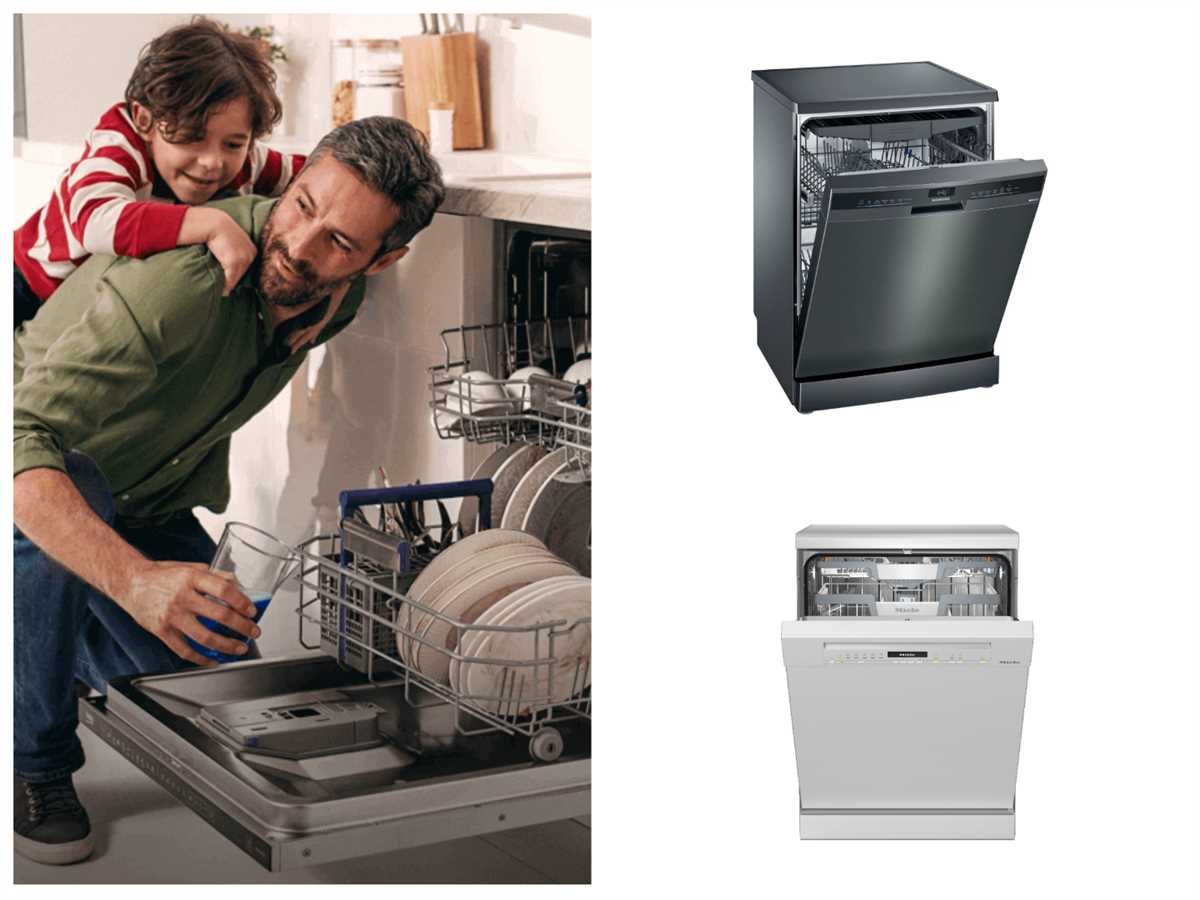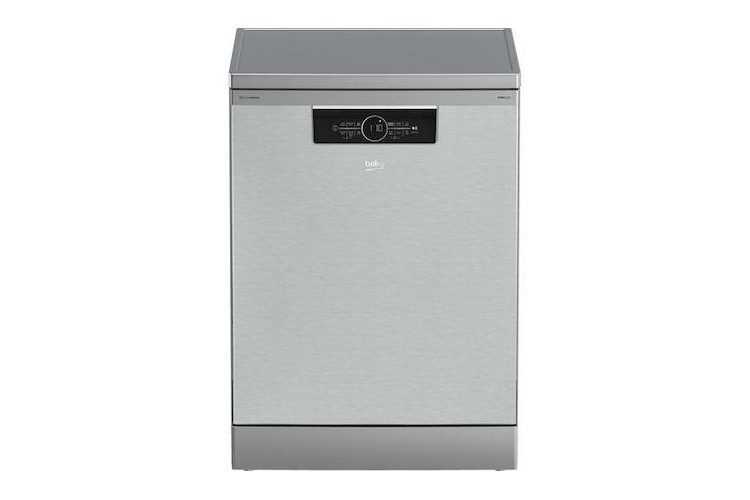


If you’re experiencing low water pressure in your home, finding a dishwasher that can still deliver top-notch cleaning performance can be a challenge.
Low water pressure can be caused by various factors, such as outdated plumbing systems or living in an area with inadequate water supply. Luckily, there are dishwashers specifically designed to handle this issue and provide efficient cleaning even with low water pressure.
In this article, we will discuss some of the best dishwashers available in the market that can effectively operate under low water pressure conditions. With these dishwashers, you can enjoy clean and spotless dishes without worrying about the water pressure limitations.
Whether you’re looking for a budget-friendly option or a high-end dishwasher with advanced features, we’ve got you covered. Let’s explore the top dishwashers that are perfect for low water pressure situations.
The Importance of Low Water Pressure in Dishwashers
When it comes to choosing a dishwasher, one of the crucial factors to consider is the water pressure. Low water pressure can significantly impact the performance and effectiveness of your dishwasher. It is essential to understand the significance of low water pressure and its implications on the dishwashing process.
Efficient Cleaning: Dishwashers with low water pressure often struggle to clean dishes thoroughly. Adequate water pressure is necessary to spray and rinse off food particles, grease, and stains from the dishes. With low water pressure, the water may not reach all areas of the dishwasher, resulting in subpar cleaning results.
Water Conservation: Low water pressure dishwashers can save a significant amount of water compared to high-pressure models. These dishwashers are designed to use water efficiently and effectively, using less water overall. This is especially beneficial in areas with water scarcity or for eco-conscious individuals looking to reduce their water consumption.
Reduced Energy Consumption: Low water pressure dishwashers can also contribute to energy savings. Since they require less water, the dishwasher will use less energy to heat the water and run the cleaning cycles. This can lead to lower electricity bills and a more sustainable kitchen appliance.
Less Noise: Dishwashers with high water pressure can often be noisy during the cleaning cycle. The water rushing through the pipes and sprayers can create a loud and disruptive sound. With low water pressure, the dishwasher operates more quietly, allowing for a peaceful and enjoyable environment in your kitchen.
Consider these factors when choosing a dishwasher to ensure that you select the one that meets your specific needs and preferences. Whether it’s efficient cleaning, water conservation, energy savings, or noise reduction, low water pressure dishwashers have their advantages and can be a suitable option for many households.
Factors to consider when buying a dishwasher for low water pressure

When dealing with low water pressure, it is important to choose a dishwasher that can still operate efficiently and effectively. Here are some factors to consider when buying a dishwasher for low water pressure:
1. Water Pressure Requirements
Before making a purchase, check the water pressure requirements of the dishwasher. Some models require higher water pressure to function optimally, while others are designed to work well with low water pressure. Look for a dishwasher that specifically mentions compatibility with low water pressure.
2. Spray Arm Design
The spray arm is responsible for distributing water throughout the dishwasher. Opt for a dishwasher with a spray arm design that is well-suited for low water pressure. Look for features such as strategically placed nozzles and rotating spray arms that can effectively clean dishes even with lower water pressure.
3. Energy Efficiency
Choose a dishwasher that is energy efficient to maximize the use of lower water pressure. Look for models with a good energy rating and features such as sensors that can adjust the water usage based on the load and water pressure. This will help ensure that the dishwasher operates efficiently and conserves water even with low water pressure.
4. Water Filtration System
A good water filtration system is important when dealing with low water pressure. Look for dishwashers that have a robust water filtration system to remove any impurities or debris from the water. This will help prevent clogging and ensure that the dishwasher can run smoothly even with low water pressure.
5. Size and Capacity
Consider the size and capacity of the dishwasher to ensure it can accommodate your needs. Look for a dishwasher with multiple loading options and adjustable racks to maximize space and fit various dish sizes. Don’t forget to measure the available space in your kitchen to ensure the dishwasher fits properly.
By considering these factors, you can find a dishwasher that is suited for low water pressure and will still provide efficient and effective cleaning results for your dishes.
The top features to look for in a dishwasher for low water pressure
Having low water pressure in your home can be frustrating, especially when it comes to household chores like doing the dishes. However, there are dishwashers on the market that are specifically designed to work efficiently with low water pressure. When shopping for a dishwasher for low water pressure, here are some features to look for:
1. High-pressure spray arms

One of the most important features to consider in a dishwasher for low water pressure is high-pressure spray arms. These spray arms are designed to deliver a powerful spray of water to ensure thorough cleaning, even with low water pressure. Look for a dishwasher that has multiple spray arms to effectively clean every corner of the dishwasher.
2. Adjustable water pressure settings

Another important feature to look for is adjustable water pressure settings. This allows you to customize the water pressure to ensure optimal cleaning performance. With adjustable settings, you can increase the water pressure for heavily soiled dishes and decrease it for delicate items. This feature is especially useful when dealing with low water pressure.
3. Efficient filtration system
An efficient filtration system is crucial for a dishwasher to work well with low water pressure. Look for a dishwasher that has a high-quality filtration system, preferably a multi-stage filtration system. This will help to remove food particles and debris from the water, preventing clogs and ensuring that the dishes come out clean even with low water pressure.
4. Short wash cycles

Dishwashers with short wash cycles are ideal for low water pressure situations. Look for a dishwasher that offers quick wash or express wash cycles. These shorter cycles not only save time and energy but also help to ensure that the dishes are cleaned thoroughly within a reasonable amount of time, even with low water pressure.
5. Energy-efficient design
An energy-efficient dishwasher not only saves you money on utility bills but also works well with low water pressure. Look for a dishwasher that is Energy Star certified, as these models are designed to use less water and energy without compromising on performance. Choosing an energy-efficient dishwasher will help you maximize the use of your low water pressure while still getting clean dishes.
- High-pressure spray arms
- Adjustable water pressure settings
- Efficient filtration system
- Short wash cycles
- Energy-efficient design
Recommended dishwashers for low water pressure
If you have low water pressure in your home, finding a dishwasher that can still effectively clean your dishes can be a challenge. However, there are dishwasher models available that are specifically designed to work well with low water pressure systems. Here are some recommended dishwashers that can handle low water pressure:
- Dishwasher model 1: This dishwasher is equipped with advanced water pressure sensors that can detect low water pressure and adjust the wash cycle accordingly. It has powerful spray arms that can still provide thorough cleaning even with limited water flow. Additionally, it has specialized jets that can remove tough stains and dried-on food, ensuring sparkling clean dishes.
- Dishwasher model 2: Another great option for low water pressure households is this dishwasher. It features a booster pump that can increase the water pressure during the wash cycle, compensating for the low water pressure in your home. It also has a pre-wash cycle that can effectively remove stubborn dirt before the main wash cycle, ensuring excellent cleaning results even with low water flow.
- Dishwasher model 3: This dishwasher is designed with a unique filtration system that can efficiently remove food particles and debris from the water, preventing clogs and ensuring proper water circulation even with low water pressure. It also has a specialized drying system that can effectively dry your dishes, leaving them spotless and ready to use.
When choosing a dishwasher for low water pressure, it’s important to consider the features that can compensate for the lack of water flow. Look for models with adjustable water pressure settings, powerful spray arms, and specialized cleaning jets. Additionally, consider dishwashers with booster pumps or filtration systems that can improve water circulation and enhance cleaning performance. These recommended dishwashers are designed to provide efficient and thorough cleaning even in households with low water pressure.
Tips for improving water pressure in your dishwasher
If you’re experiencing low water pressure in your dishwasher, it can be frustrating and lead to less effective cleaning. However, there are several steps you can take to improve the water pressure and maximize the dishwasher’s performance.
1. Check for clogged filters and spray arms
One common cause of low water pressure is clogged filters and spray arms. These components can become blocked with debris over time, restricting the flow of water. Regularly clean the filters and remove any buildup from the spray arms to ensure proper water flow.
2. Inspect the water inlet valve
The water inlet valve is responsible for controlling the water flow into the dishwasher. If it is not functioning properly, it can result in low water pressure. Check for any clogs or damages and replace the valve if necessary to improve water flow.
3. Clear the water supply line
A clogged or restricted water supply line can significantly affect the water pressure in your dishwasher. Make sure the water supply line is clear of any obstructions or kinks that may be limiting the water flow. If necessary, replace the supply line to ensure a steady flow of water.
4. Verify proper dishwasher loading

Improper loading of dishes can obstruct the spray arms and prevent proper water distribution. Be mindful of how you load your dishwasher to ensure adequate water flow. Avoid overcrowding dishes and make sure they are not blocking the spray arms, allowing water to reach all areas of the dishwasher.
5. Evaluate the water pressure in your home
Low water pressure in your dishwasher may be a reflection of overall low water pressure in your home. Check the water pressure from other faucets and fixtures to determine if the issue is isolated to the dishwasher or a wider problem. If the water pressure is consistently low, you may need to contact a plumber to address the issue.
By following these tips, you can improve the water pressure in your dishwasher and ensure your dishes are cleaned effectively. Remember to perform regular maintenance and address any issues promptly to optimize the performance of your dishwasher.
5 Best dishwashers for low water pressure
Features
| Part Number | PLLOn1cpt7zoug5207-12 |
Features
| Part Number | FSX52927Z |
| Model | FSX52927Z |
| Warranty | 2 year manufacturer. |
| Color | 13 Settings (1) |
Features
| Part Number | 00704174 |
Video
FAQ
What can I do to improve water pressure in my dishwasher?
There are a few things you can try to improve water pressure in your dishwasher. Firstly, check the inlet valve to make sure it is fully open. Secondly, inspect the water supply line for any kinks or clogs that may be restricting water flow. Thirdly, clean the dishwasher’s spray arms and nozzles to ensure they are not blocked with debris. Lastly, check the water pressure from your home’s main water supply and consider installing a booster pump if needed.
Why is the water pressure in my dishwasher low?
Low water pressure in your dishwasher could be caused by several factors. It could be a problem with the home’s main water supply, such as low water pressure from the municipal source. It could also be due to a clogged or partially closed inlet valve, a clogged water supply line, or a problem with the dishwasher’s internal components such as damaged spray arms or a faulty pump.
Can a clogged spray arm cause low water pressure in my dishwasher?
Yes, a clogged spray arm can cause low water pressure in your dishwasher. If the spray arm is blocked with debris or mineral deposits, it will not be able to distribute water effectively during the wash cycle. Inspect the spray arm for any obstructions and clean it thoroughly to restore proper water flow and pressure.
Should I check the water inlet valve to improve water pressure in my dishwasher?
Yes, checking the water inlet valve is one of the first things you should do to improve water pressure in your dishwasher. Ensure that the valve is fully open and that no debris is obstructing it. If the valve is partially closed or clogged, it can restrict water flow and result in low water pressure during the wash cycle.
What should I do if cleaning the spray arms doesn’t improve water pressure in my dishwasher?
If cleaning the spray arms does not improve water pressure in your dishwasher, there may be a more serious issue at hand. You can try checking the water supply line for any kinks or clogs, as well as inspecting the dishwasher’s filters for any blockages. If the issue persists, it may be necessary to call a professional dishwasher repair service to diagnose and fix the problem.
Can installing a booster pump help improve water pressure in my dishwasher?
Yes, installing a booster pump can help improve water pressure in your dishwasher. A booster pump works by increasing the water pressure in your home’s main water supply, which in turn provides stronger water flow to your dishwasher. If you have consistently low water pressure, even after checking and cleaning the dishwasher’s components, a booster pump may be a good solution to improve performance.
Conclusion
In conclusion, improving water pressure in your dishwasher can vastly improve its efficiency and effectiveness in cleaning your dishes. By following the tips mentioned in this article, such as checking the water supply, cleaning the filter, and adjusting the water pressure, you can ensure that your dishwasher is able to operate at its optimal level. Additionally, maintaining good water pressure can extend the lifespan of your dishwasher and prevent any potential issues in the future. So, take the time to implement these tips and enjoy spotless, sparkling dishes every time!











